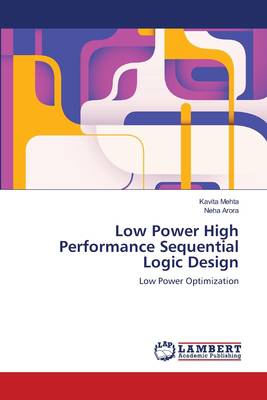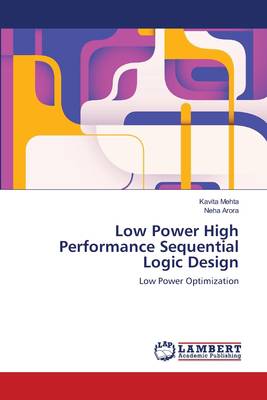
- Afhalen na 1 uur in een winkel met voorraad
- Gratis thuislevering in België vanaf € 30
- Ruim aanbod met 7 miljoen producten
- Afhalen na 1 uur in een winkel met voorraad
- Gratis thuislevering in België vanaf € 30
- Ruim aanbod met 7 miljoen producten
Zoeken
Low Power High Performance Sequential Logic Design
Low Power Optimization
Kavita Mehta, Neha Arora
Paperback | Engels
€ 60,95
+ 121 punten
Omschrijving
Latches and flip-flops have a direct impact on power consumption and speed of VLSI systems. Therefore study on low-power and high performance latches and flip-flops is inevitable. In this book we delve into the details of TSPC pulsed latch design and optimization for low power. The proposed circuit uses MTCMOS technique resulting in significant energy savings. This proposed circuit outcomes existing designs and shows the best result. The leakage power is reduced by using best technique among all run time techniques viz. MTCMOS. Thereby comparison of different conventional flip-flops and TSPC flip-flop in terms of power consumption, propagation delays and product of power consumption and propagation delay with SPICE simulation results is calculated. This book also enumerates low power, high-speed design of D flip-flop. It presents technique to minimize subthreshold leakage power as well as the power consumption of the CMOS circuits. The proposed circuit in this book shows a design for D flip flop to increase the overall speed of the system as compared to other circuits. This technique allows circuit to achieve lowest power consumption
Specificaties
Betrokkenen
- Auteur(s):
- Uitgeverij:
Inhoud
- Aantal bladzijden:
- 96
- Taal:
- Engels
Eigenschappen
- Productcode (EAN):
- 9783659142055
- Verschijningsdatum:
- 6/06/2012
- Uitvoering:
- Paperback
- Afmetingen:
- 150 mm x 220 mm
- Gewicht:
- 150 g

Alleen bij Standaard Boekhandel
+ 121 punten op je klantenkaart van Standaard Boekhandel
Beoordelingen
We publiceren alleen reviews die voldoen aan de voorwaarden voor reviews. Bekijk onze voorwaarden voor reviews.











